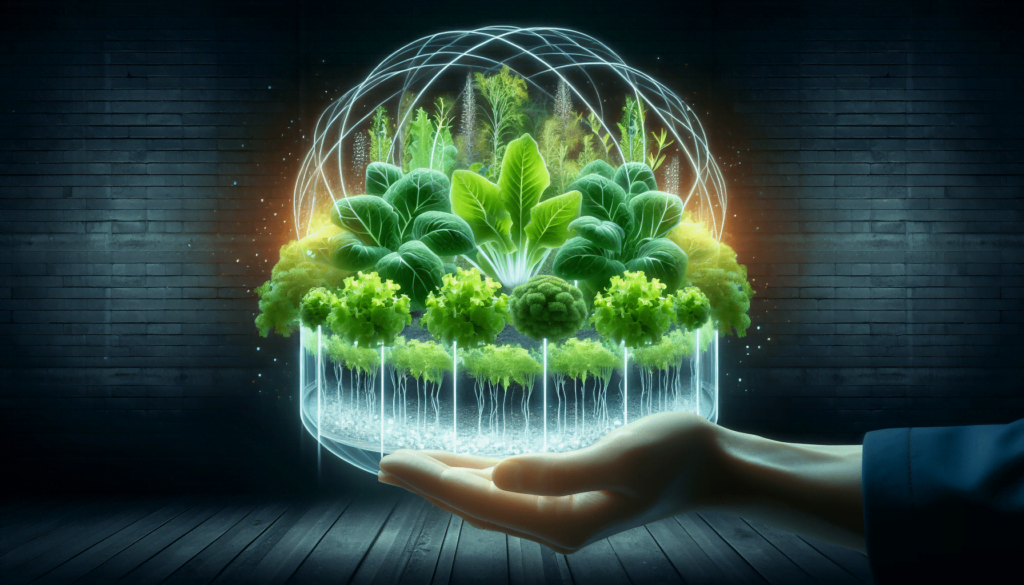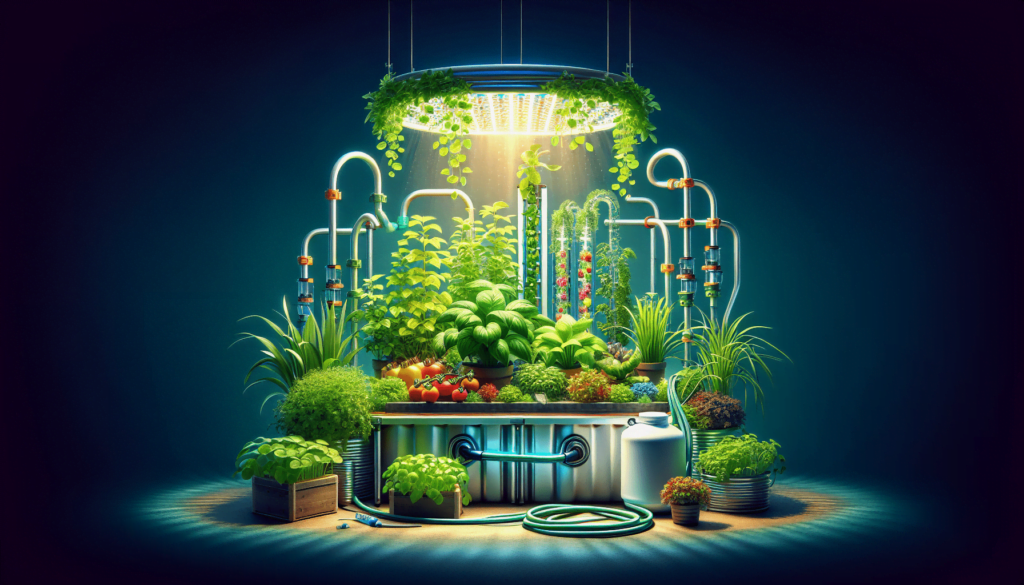In “Mastering Hydroponics: Top Tips for Growing Catnip,” we’ve compiled a treasure trove of strategic tips and advice to maximize your catnip’s potential growth. These ten essential steps highlight the unique considerations for cultivating catnip hydroponically. Whether you’re a novice at this innovative farming method or a seasoned gardener seeking to expand your green thumb repertoire, this insightful guide is designed to kindle your hydroponic ambitions. Prepare yourself for a truly transformative journey into the world of hydroponic catnip cultivation.
Understanding the Basics of Hydroponics
Hydroponics is a growing method that allows us to cultivate plants in water, without soil. The technique relies on a nutrient solution to deliver the necessary minerals to the plant roots, which can absorb them directly. It’s an efficient, innovative and, at times, very productive way of getting the best out of your plants.
The concept of hydroponics
Hydroponics is all about precision. We have control over the nutrients, water, and light the plants receive, letting us fine-tune the conditions for optimal growth. While it may sound complex, it’s actually straightforward once you grasp its basic principles. The great thing about hydroponics is the freedom it gives us from soil-borne pests and diseases; it means cleaner growth and less maintenance.
Why choose hydroponics for growing catnip
Hydroponics can be an excellent choice for growing catnip because it speeds up the growth process, provides you with greater control over the plant’s health, and allows you to utilize space efficiently. Catnip, a favorite among feline friends, is known to grow faster and stronger in a hydroponic system than in soil.
Types of hydroponic systems suitable for catnip
There are several types of hydroponic systems, but the most suitable for growing catnip include Ebb and Flow, Deep Water Culture (DWC), and Wick systems. These systems can provide the necessary oxygenation and nutrient delivery to help catnip plants thrive.
Getting Started with the Hydroponic Setup
Once you have grasped the basics of hydroponics, the next step is setting up your hydroponic system.
Choosing the right hydroponic system for catnip
When it comes to catnip, selecting the right hydroponic system is crucial. Factors such as space, budget, and growing objectives should be considered. Deep Water Culture or DWC system is a common and simple choice for beginners, which also works very well for growing catnip hydroponically.
Preparing the growing area
Preparing the growing area is a critical part of your setup. Select a space that can comfortably accommodate your system and provide the necessary lighting for the catnip. Cleanliness is also crucial as it helps prevent pests and disease, so ensure the area is clean and sterile before installing your system.
Setting up the hydroponic system
Setting up the hydroponic system involves installing the different components such as the reservoir, the growing trays, aeration system, and lights. Follow the instructions specific to your chosen system carefully to get it up and running.

Selection of Hydroponic Medium for Catnip
A hydroponic medium, or grow medium, is the material that supports your catnip plant and helps evenly distribute nutrients and water to the root system.
Understanding the purpose of a hydroponic medium
Unlike traditional gardening, hydroponics doesn’t use soil. Instead, we use a grow medium to act as the stabilizer for plant roots, while providing critical aeration and water retention capabilities.
Different types of hydroponic mediums
Common hydroponic mediums include Rockwool, perlite, coco coir, clay pellets, and vermiculite. Each medium has its own benefits and drawbacks, as well as suitability for specific types of hydroponic systems.
Best hydroponic mediums for growing catnip
Coco coir and perlite are both great options for growing catnip. Coco coir mimics the texture of soil, which catnip plants prefer, while perlite is porous and lightweight, allowing excellent aeration and hydration for the plant roots.
Seed Germination and Transplanting in Hydroponics
Once the hydroponic setup is ready, the next step is to start the seed germination process for the catnip seeds.
Process of seed germination for catnip
To germinate catnip seeds, first soak them in water for 24 hours. Place the seeds gently on your chosen grow medium, ensuring they’re not buried too deeply. Maintain a consistent temperature of around 70°F and keep the grow medium moist for best results.
Transplanting germinated seeds into the hydroponic system
Once the catnip seeds have germinated and developed a stable root system, they’re ready to be transplanted into the hydroponic system. Carefully place the young seedlings into their final growing medium, being careful not to damage the roots.
How to care for newly transplanted catnip
After transplanting, it’s important to keep the catnip under a less intense light to avoid shock, also known as transplant stress. Maintain a moist grow medium and proper temperature, and avoid any nutrient solution for the first few days to allow the plants to adjust.

Nutrient Solution for Hydroponic Catnip
The success of catnip growth in hydroponics highly depends on the quality and composition of the nutrient solution.
The importance of a nutrient solution in hydroponics
A nutrient solution is the primary source of nourishment for hydroponically grown plants. It contains a blend of essential macros and micro-nutrients that plants need to grow, flourish, and produce.
Preparing the perfect nutrient solution for catnip
Creating nutrient solution for catnip involves incorporating primary nutrients like nitrogen, phosphorous, and potassium, in combination with other crucial trace elements. It’s generally recommended to start with a pre-mixed solution and adjust accordingly to your plants’ specific needs over time.
When and how to change the nutrient solution
The nutrient solution should typically be replaced every two weeks, or when you notice signs of nutrient deficiency in your catnip plants. Always remember to check the pH and nutrient concentration with every change to ensure it’s optimal for your catnip.
Maintaining the Right Environmental Conditions
Maintaining the right growing environment is critical for the healthy growth of your hydroponic catnip.
Ideal temperature and humidity for hydroponic catnip
The optimal growing temperature for catnip is between 70-75°F. High humidity levels can cause issues with mold and disease, so aim for a level around 40-70%.
Controlling light exposure
Catnip plants prefer full exposure to light; they need around 14-16 hours of light daily for best growth. LED or fluorescent lights work well for indoor hydroponic systems.
Monitoring and controlling pH and EC
Maintaining a balanced pH is vital for nutrient absorption. For catnip, aim for a slightly acidic pH of 6.1-6.5. EC (Electric Conductivity) is a measure of nutrient concentration, and for catnip, it should be kept between 1.1 and 1.7.
Preventing and Controlling Pests and Diseases
Hydroponic systems are usually less susceptible to pests and diseases, but it’s always beneficial to stay prepared.
Common pests and diseases affecting hydroponic catnip
Common pests affecting catnip include aphids, spider mites, and whiteflies. In terms of diseases, watch out for root rot and fungal issues, particularly if humidity levels are too high.
Effective preventative measures
Prevention always outweighs cure. Ensure you maintain a clean growing environment, don’t overwater, monitor pH levels, and closely inspect your plants regularly.
Safe and effective treatments for pests and diseases
Should you spot any pests or disease symptoms, isolate the affected plants immediately. Organic options like neem oil can be beneficial for pest infestations, while diseases may be treated with appropriate fungicides.
Regular Care and Maintenance of Hydroponic Catnip
Hydroponic catnip plants still require regular care to thrive.
Regular inspection of plants and system
Keep a close watch on your catnip plants for any signs of issues. Inspect the root system, stem, leaves, and flower buds, and also check the hydroponic system for any technical problem.
Pruning and training catnip plants
Like any other herb, catnip benefits from pruning and training to maintain its shape and promote bushier growth. This also increases airflow through the plant and can help prevent disease.
Maintaining the hydroponic system
Regularly check the pH and nutrient levels in your system, clean out the reservoir during nutrient changes, and clean or replace air stones and filters as needed.
Harvesting and Storing Hydroponic Catnip
Knowing when to harvest and how to properly store your hydroponic catnip is key to preserving its potency.
When and how to harvest catnip
Harvesting should be done just as the plant starts blooming to get the highest concentration of its active compound. Snip off the stalks at the base, always leaving 2/3 of the plant intact for future growth.
Preparing catnip for storage
After harvesting, hang the catnip upside down in a dry and dark location for a week to dry. Once completely dry, leaves can be stripped from the stems and kept.
Best practices for storing catnip
Store your catnip in airtight containers, ideally glass jars. Keep it in a cool, dry, and dark place to maintain its potency for up to a year.
Troubleshooting Common Problems in Hydroponic Catnip Production
You’ll inevitably encounter some hurdles in your hydroponic catnip journey. Identifying and treating common problems is part of the learning curve.
Identifying common problems in hydroponic catnip
Some common issues include nutrient burn, which is characterized by the tips and edges of leaves turning yellow or brown. On the other hand, nutrient deficiency will cause slow growth, yellowing or paling of leaves, and poor overall health.
Effective solutions to common problems
Nutrient burn can be resolved by reducing the nutrient strength or frequency of feeding, while deficiencies can be treated by reintroducing the deficient nutrient. Always ensure you’re maintaining the correct pH to allow for optimal nutrient absorption.
When to seek professional advice
If despite your efforts, the problem persists, or your catnip plants appear unhealthy, it may be time to seek professional advice. Many local garden centers have experienced staff who can help diagnose and troubleshoot your hydroponic issues.
Once you’ve mastered the basics, growing catnip hydroponically can be a rewarding and exciting endeavor. Whether you’re growing catnip for your pets or as a hobbyist, using hydroponics allows you to create a vibrant and healthy indoor garden. Now that you know the whys and hows of hydroponic catnip cultivation, it’s time to jump in and start your own plant-growing journey.
Forum
Got something to share or a question to ask? Jump in and start a conversation! Whether it’s tips, advice, or just sharing your experiences, we’d love to hear from you. Don’t be shy—your input could inspire or help someone else!- This forum has 1 topic, and was last updated 10 months, 2 weeks ago by .
- Topic
- Voices
- Last Post
- You must be logged in to create new topics.



